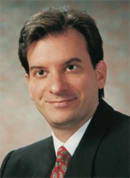The Path to Paperless
EMR Buy-in and the Generation Gap
Make it easier for older physicians to embrace new technology.
By Peter J. Polack, MD, FACS
Previously I have written on the pitfalls of the effect of naysayers on your EMR implementation project. These are typically staff members and/or doctors in your group who have already decided that the practice cannot afford EMR, the promised government incentives will never materialize and the whole thing is just an expensive boondoggle that will bring the business to its knees.
Then there are those who initially say that they are willing to go along, but in reality drag their feet or become withdrawn.
Most often, the cause of this behavior is their anxiety over the new technology as well as the unknown effects it might have on the practice. Some older staff members may have limited exposure to computers, but even physicians may not feel completely facile with the latest gadgets.
Keys to Obtain Staff Buy-In
If this technology is complex—like an EMR system—and has a significant impact on an individual's ability to do his or her job, be prepared for downright resistance. It only takes one major stakeholder such as a partner to bring down a project of this magnitude, so be sure to be proactive in doing everything to obtain physician buy-in.
Katzen Eye Group had to deal with this very issue when they converted to their EMR system in January 2004.
COO Janna Mullaney says, “I usually find that older docs fight EMR because they aren't comfortable with it; they think it's going to slow them down and it's just too much of a change in the way they have practiced for several decades. The trick is to make the transition easier and to get them involved early, to show them that they are going to have some input.”
So what are some proven ways to stave off a potential mutiny when it comes to your EMR implementation? Ms. Mullaney offers the following pointers for those practices dealing with ‘buy-in’ issues from physician partners.
► Provide screen shots early in the process to get them familiar with the fields on each template even before training.
► Make sure that the project manager spends some one-on-one time with them for training to ensure their comfort level.
► Appoint a ‘super-user’ to each older doctor to provide support.
► Start the EMR transition with new patients at first (the older doctors tend to have fewer new patients so it eases them into the process at a slightly slower pace).
► Since older providers tend to remember their patients by personal tidbits, use a system like notes to continue to identify with their patients when they don't have the thick paper chart in front of them, or use digital “sticky notes” within the EMR system.
► Put patient pictures in the template as a visual reminder of the patient.
► Keep a paper patient router so that they have that last vestige of paper.
► While scribes can add to implementation costs, these can usually be offset by cutting back on transcription, adding more patients per doctor and sometimes, because the documentation is better, you can support a higher exam code.
The issue of resistance is not strictly a generational one. There are some younger physicians who are less technologically adept and therefore may balk on EMR and, conversely, there will be older doctors who wholeheartedly embrace it. But regardless of who you are dealing with, it is a good strategy to involve these individuals early in the process to allay their anxieties and address their concerns before the situation deteriorates to an impasse. OM

|
Peter J. Polack, MD, FACS, is co-managing partner for Ocala Eye, a multisubspecialty ophthalmology practice located in Ocala, Fla. He is also founder of Emedikon, an online practice management resource for physicians and administrators. |
| In a multipart series, Dr. Polack is describing how an 11-physician practice, Ocala Eye in Ocala, Fla., with five locations and 140 employees, makes the major transition from paper medical records to EMR. During the course of the series, Dr. Polack will provide readers with a “real-time” look at how the implementation is progressing. Dr. Polack can be reached at ppolack@ocalaeye.com. |








